San Francisco Real Estate Market Report – November 2021

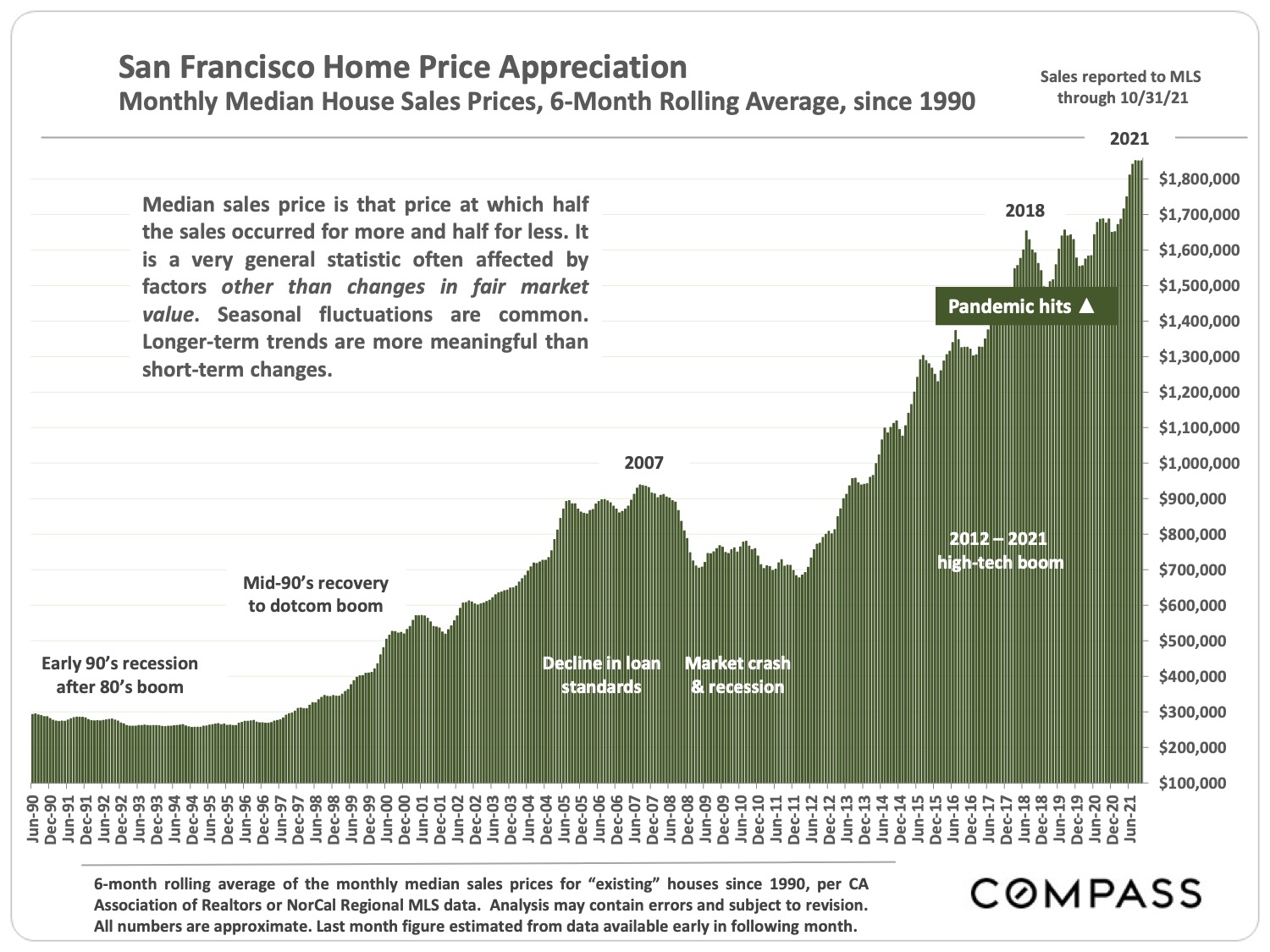
As the year begins to wind down and move into the mid-winter holidays, the market typically slows down as well: The number of new listings declines, to finally plunge in December, with sales volume following one step behind. Price reductions often jump, and some listings, especially of more expensive homes, are pulled off the market until the market wakes up in the new year – usually in late January or February depending on the weather and other factors. Of course, buying and selling occur at all times of the year, including in mid-winter, but commonly at a much reduced rate. Note that typical market seasonality was often upended in 2020 due to the pandemic; more normal seasonal trends seem to have returned in 2021.
For buyers, the coming months can offer substantial opportunities in the form of reduced competition, fewer multiple offers, less overbidding, more room to negotiate, and often significantly better deals. This is an excellent time for buyers to take a second look at listings that haven’t sold, and to make aggressive offers.
This report will review home prices appreciation by property type in selected city neighborhoods, supply and demand dynamics as illustrated by a variety of statistical measures, luxury home sales, and a survey of selected macroeconomic indicators.
The following chart reviews approximate median house sales price changes since 1990, breaking down percentage ups and downs during periods such as the dotcom era, the subprime bubble, the recent high-tech boom, and the pandemic. Readings on the chart refer not to specific prices, but to the Q1 2000 median sales price, assigned a value of 100: A reading of 180 signifies the median house price has increased by 80% since Q1 2000.

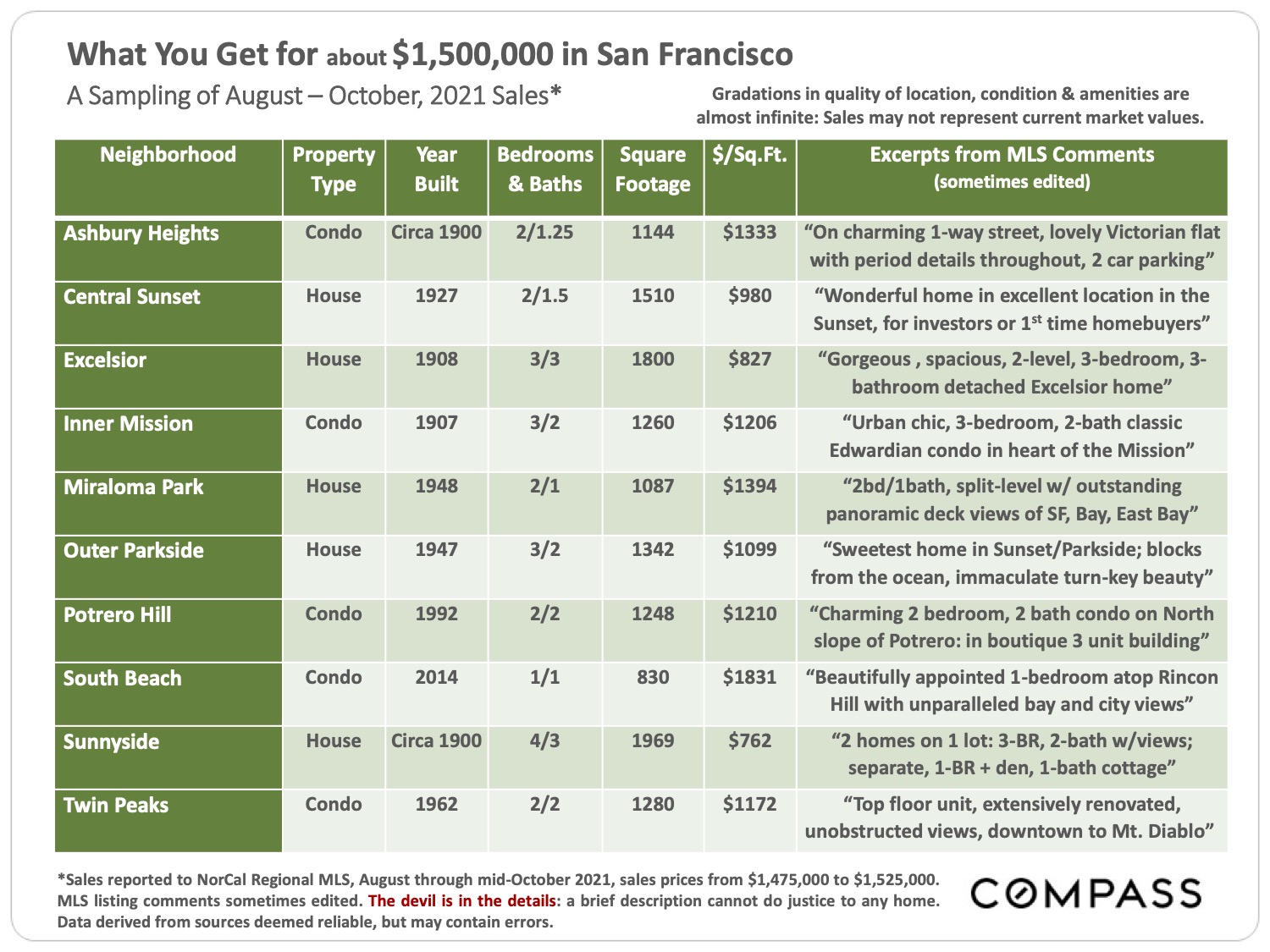
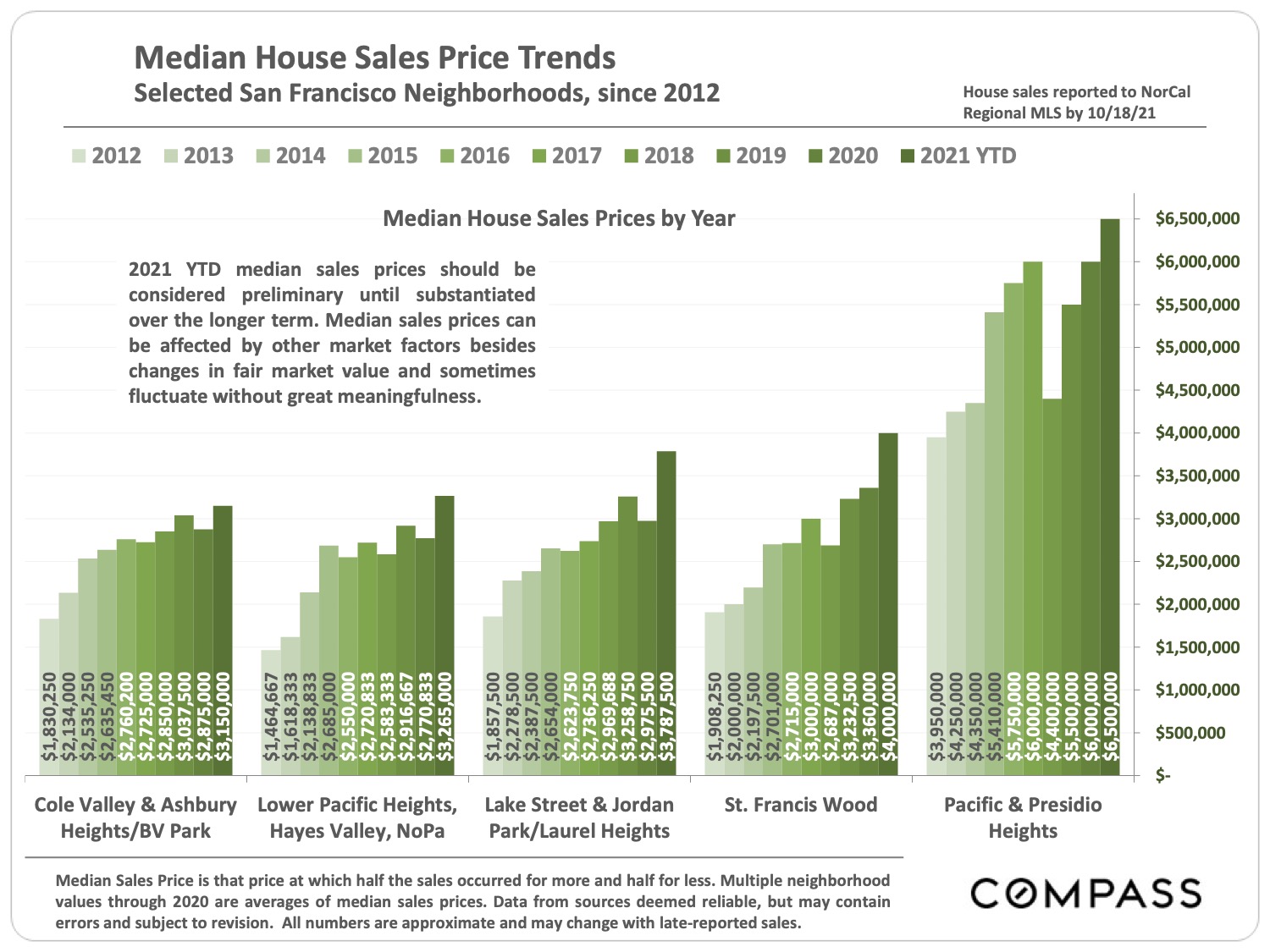
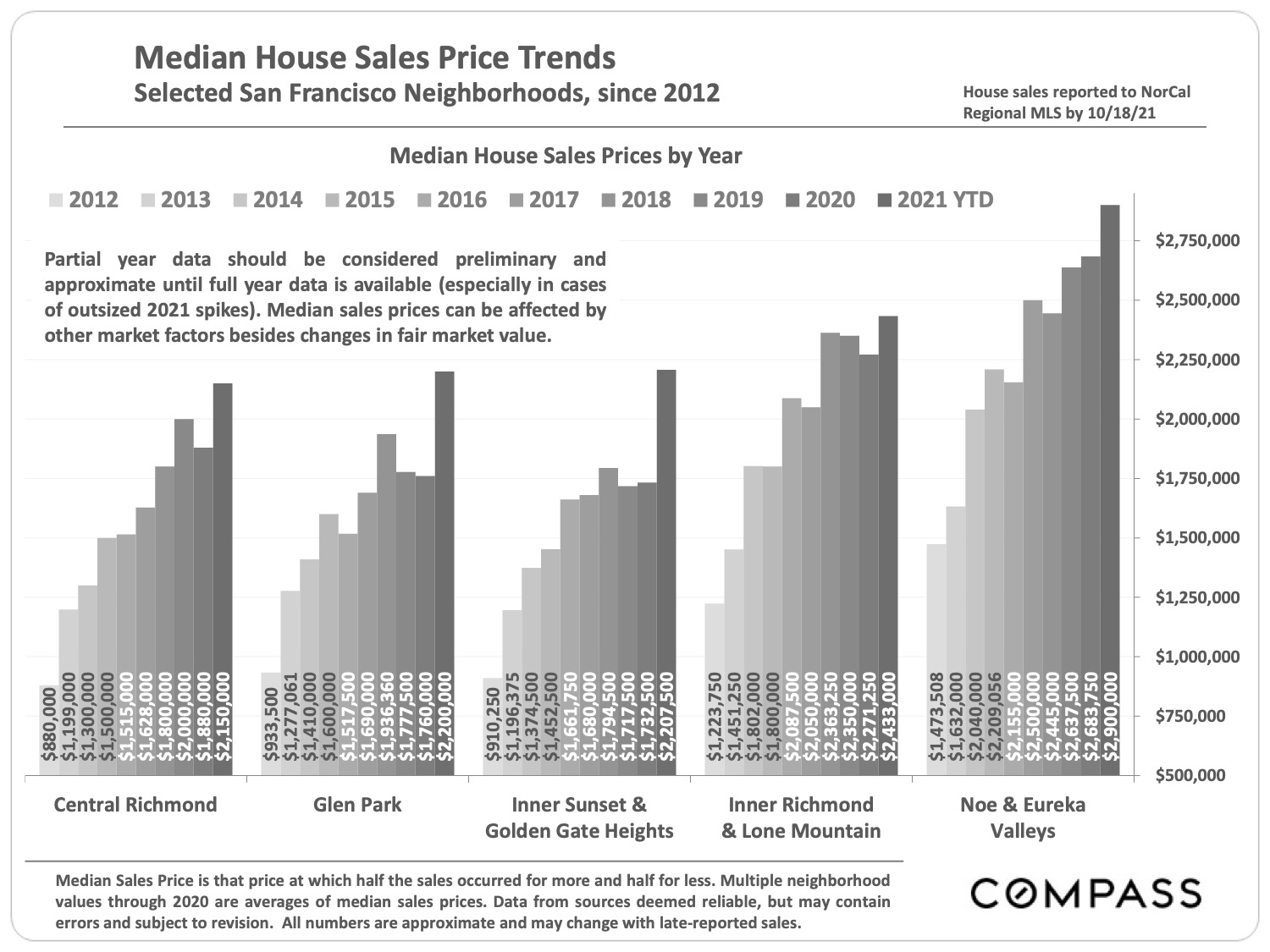
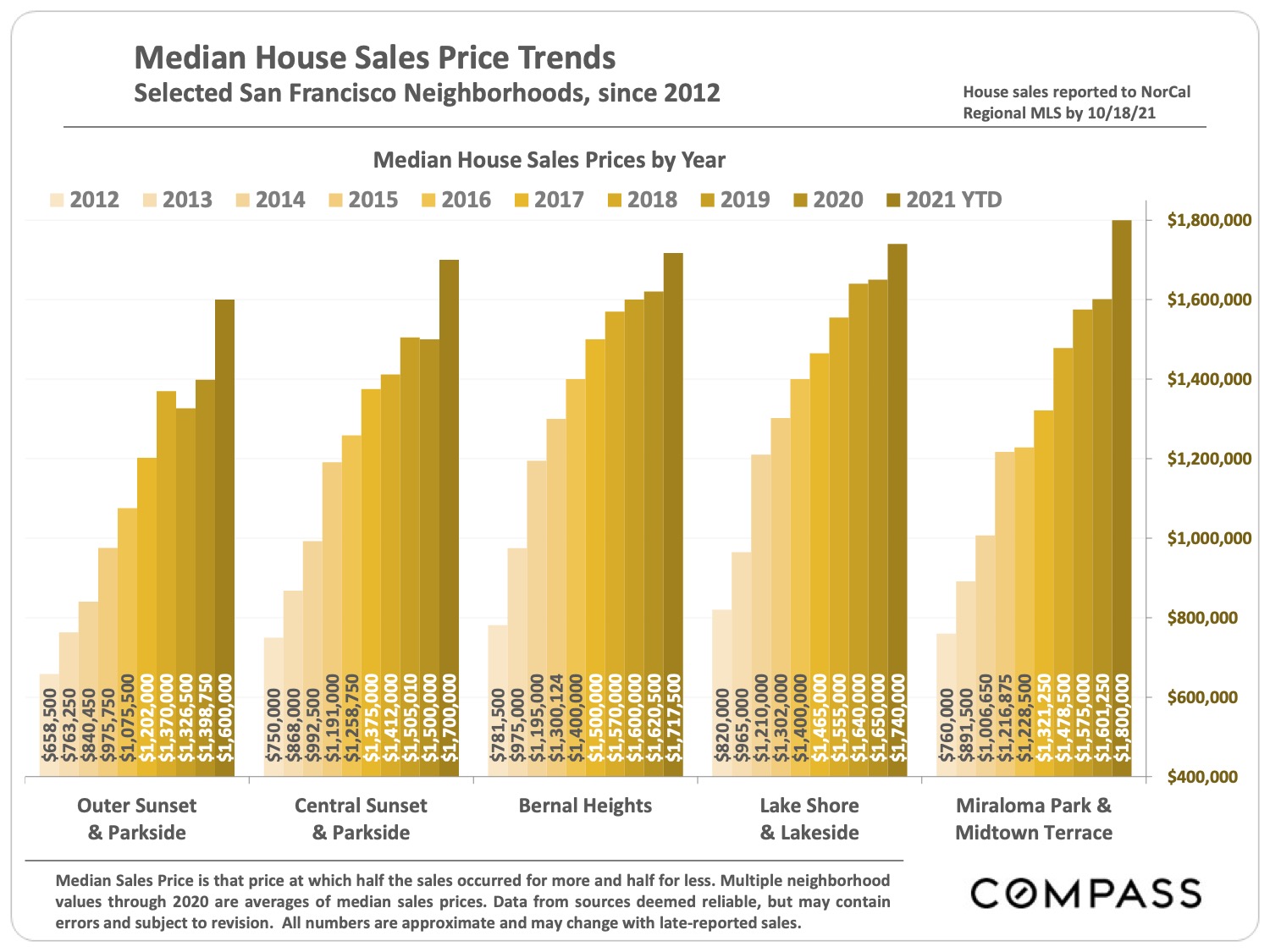
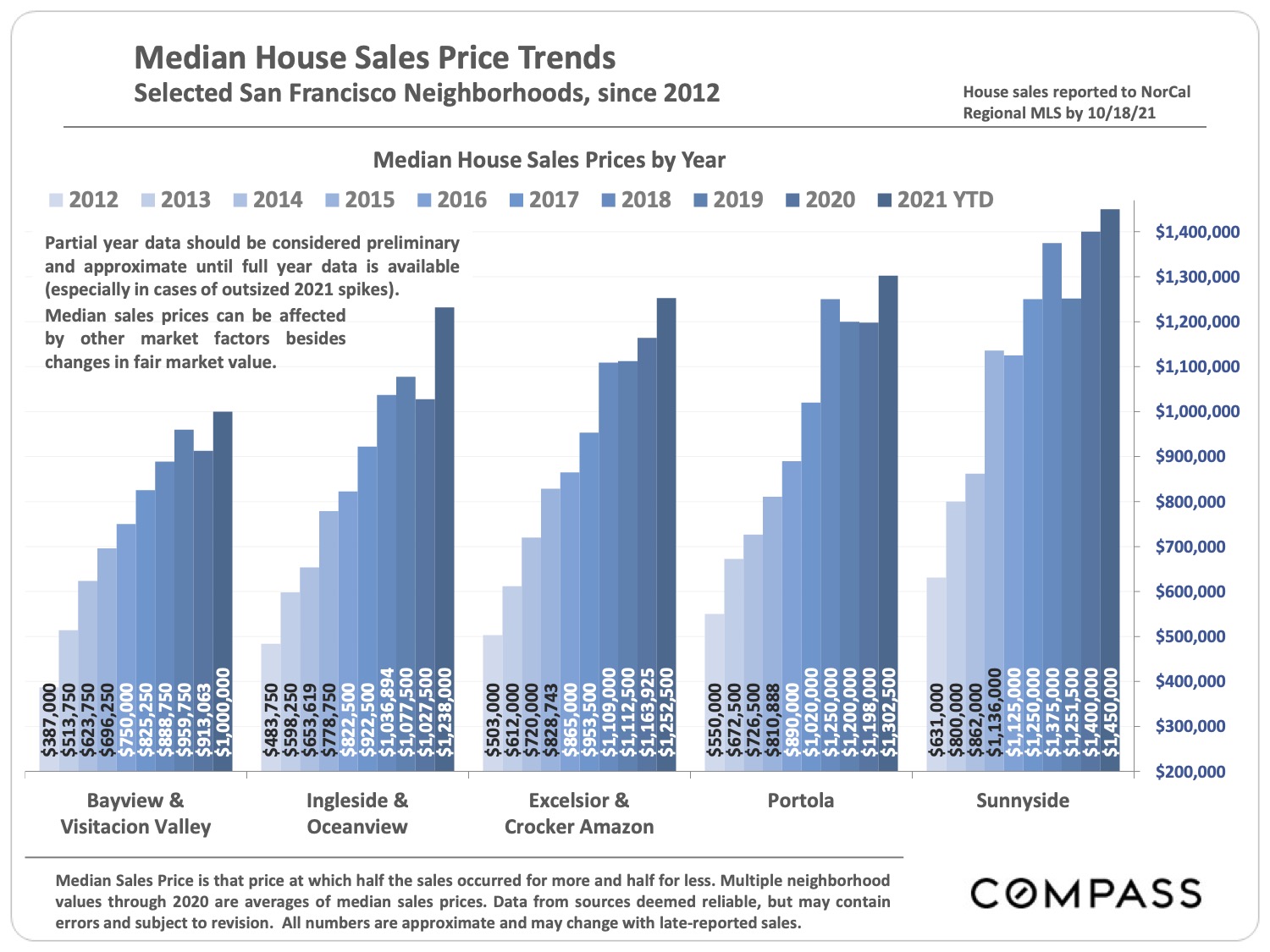
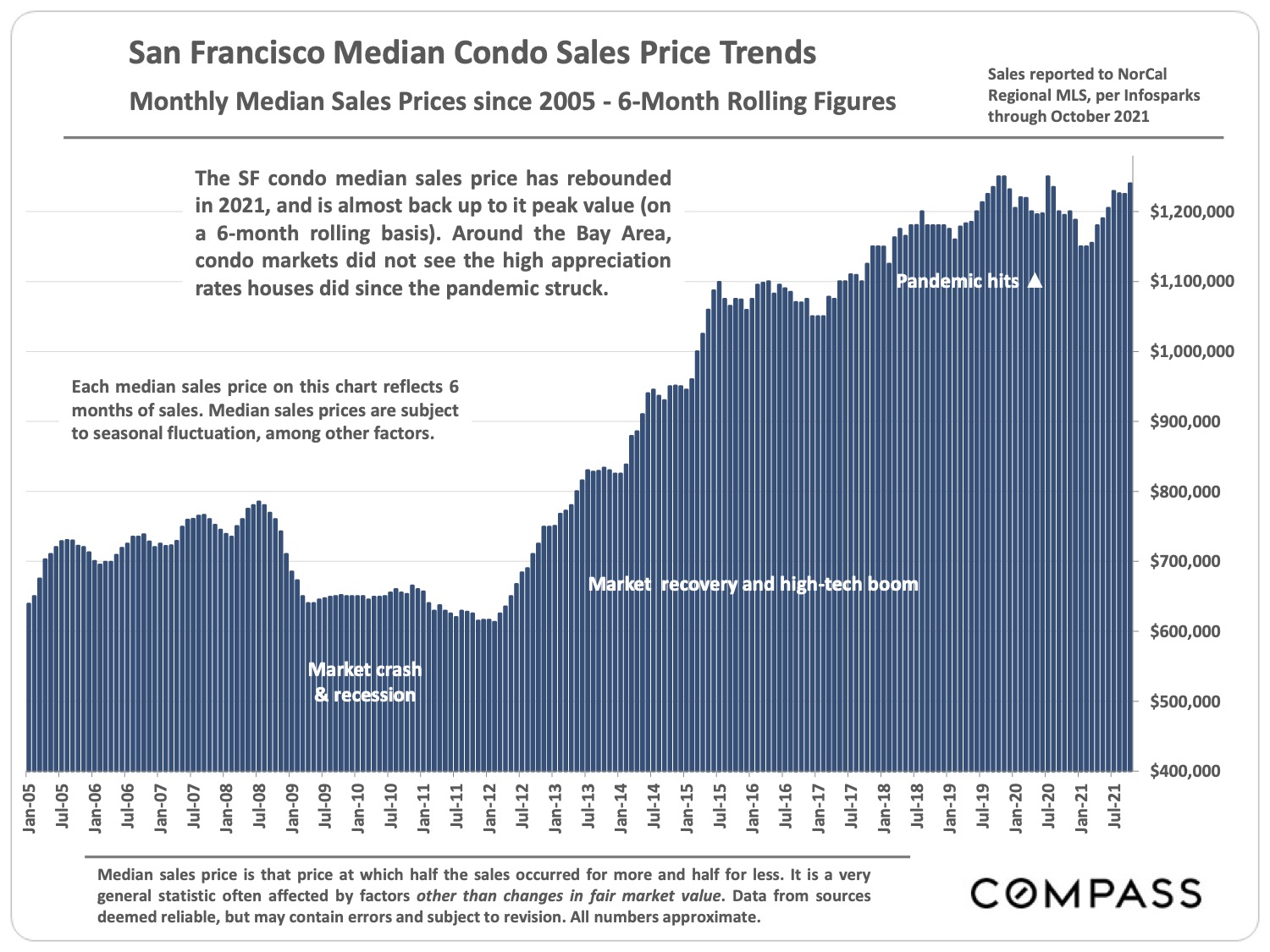
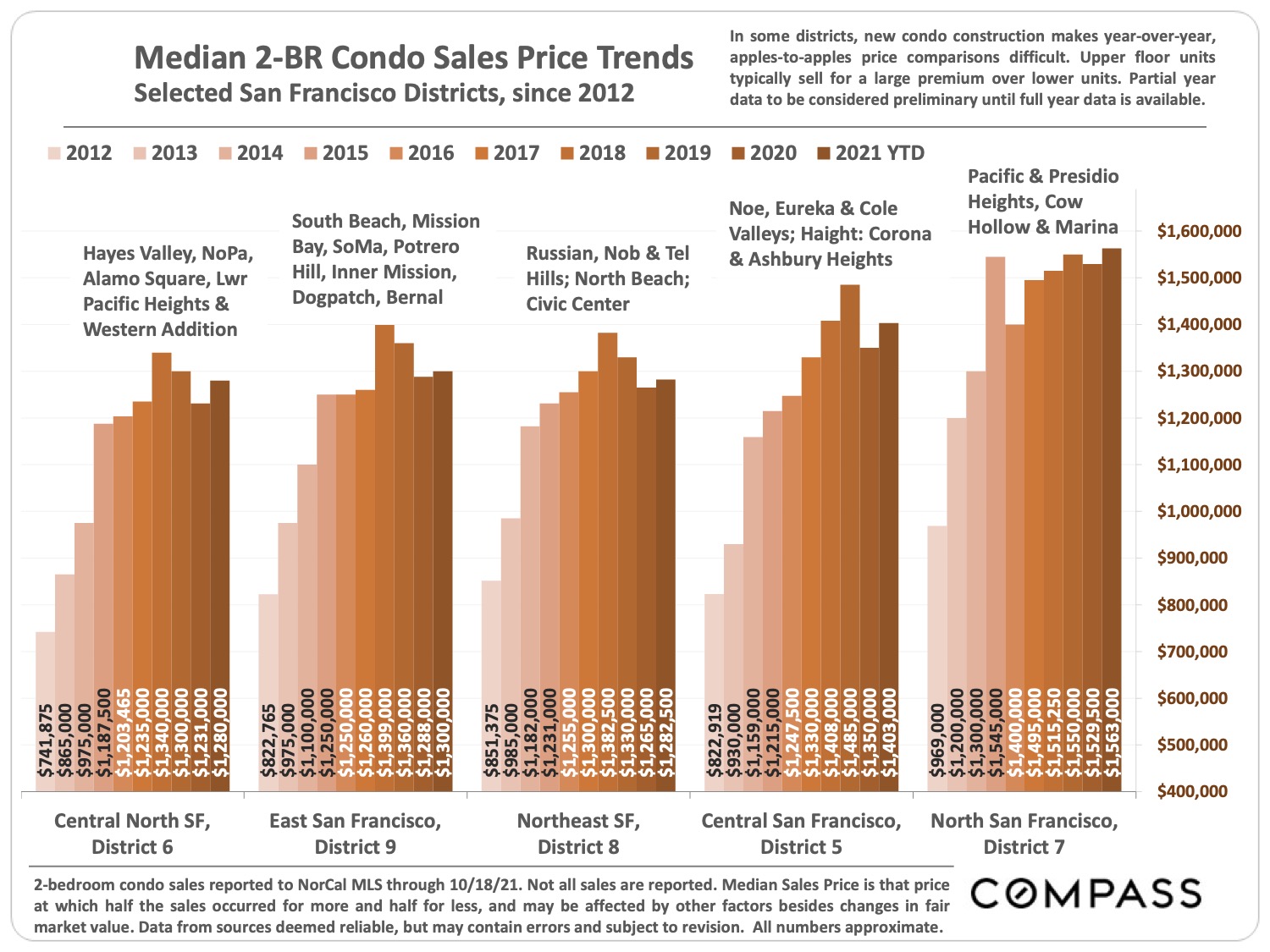

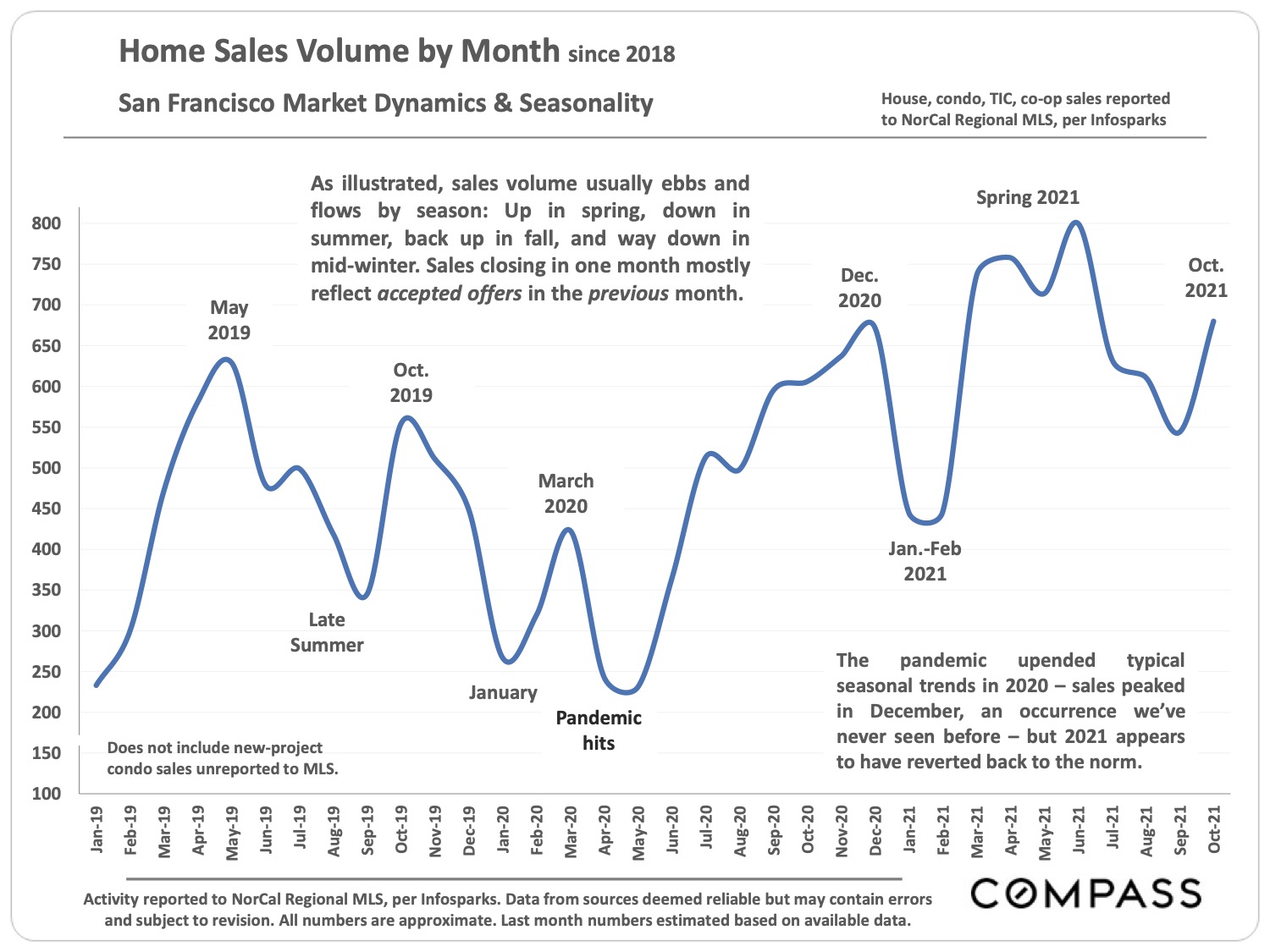
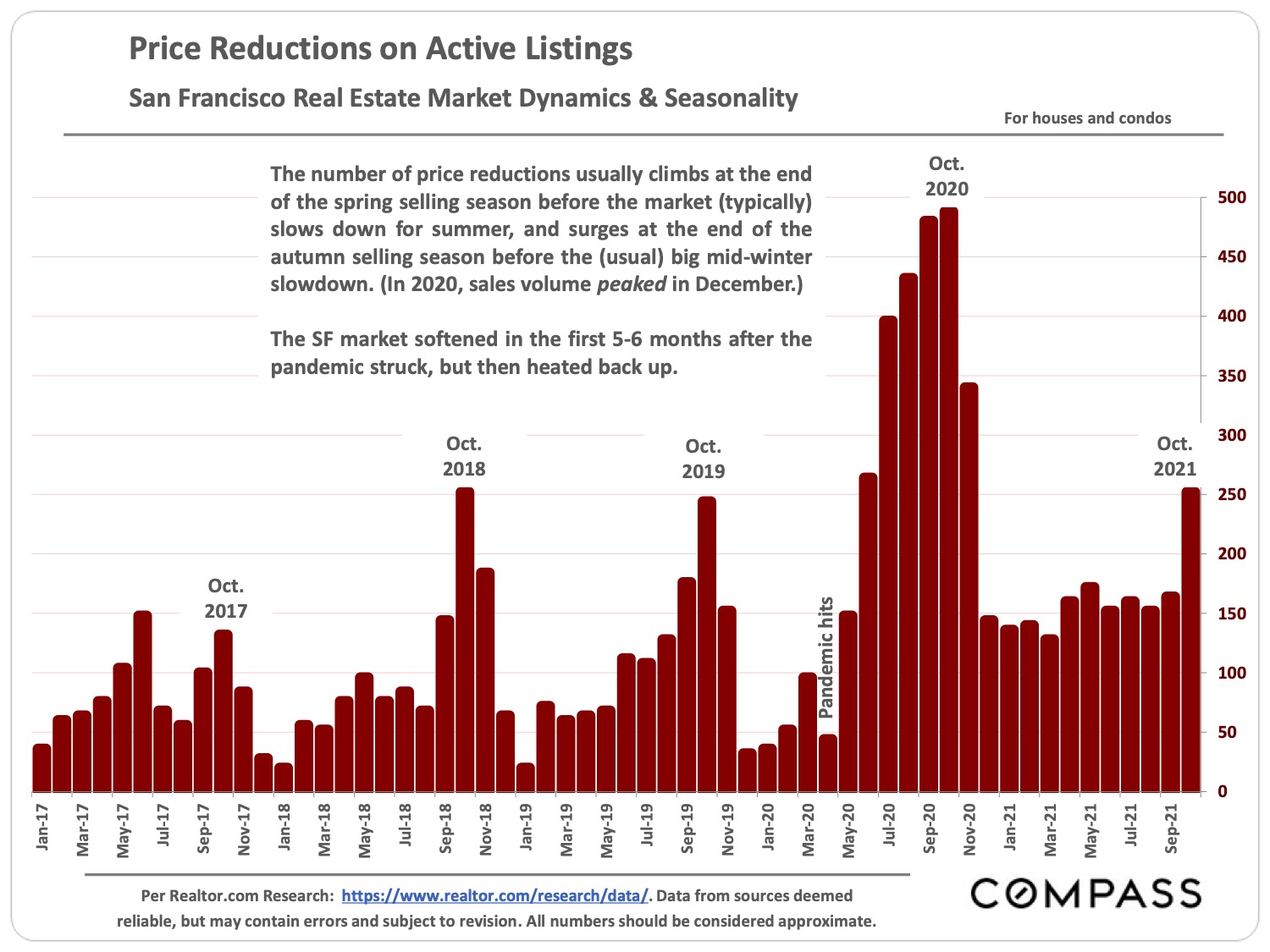
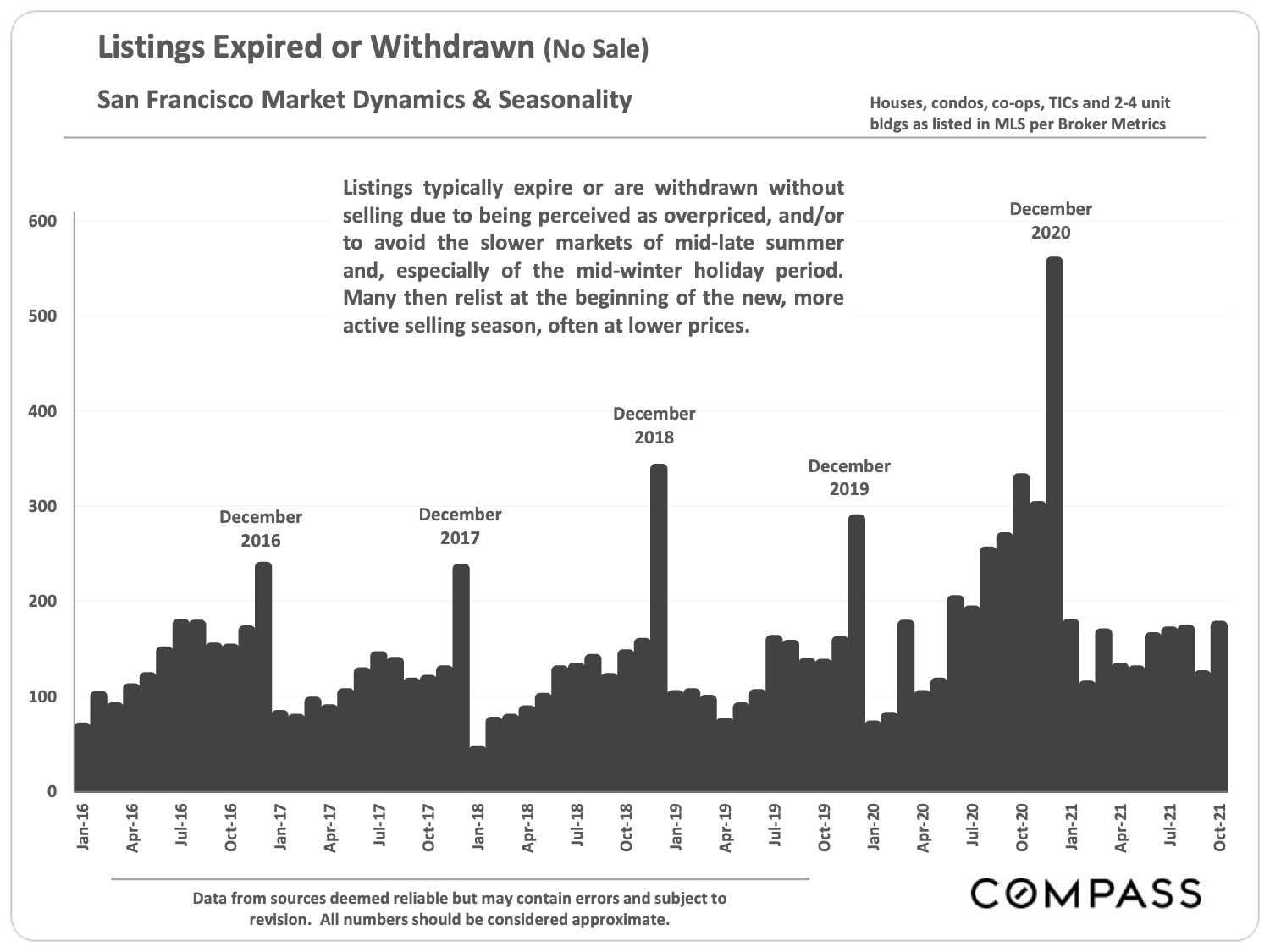
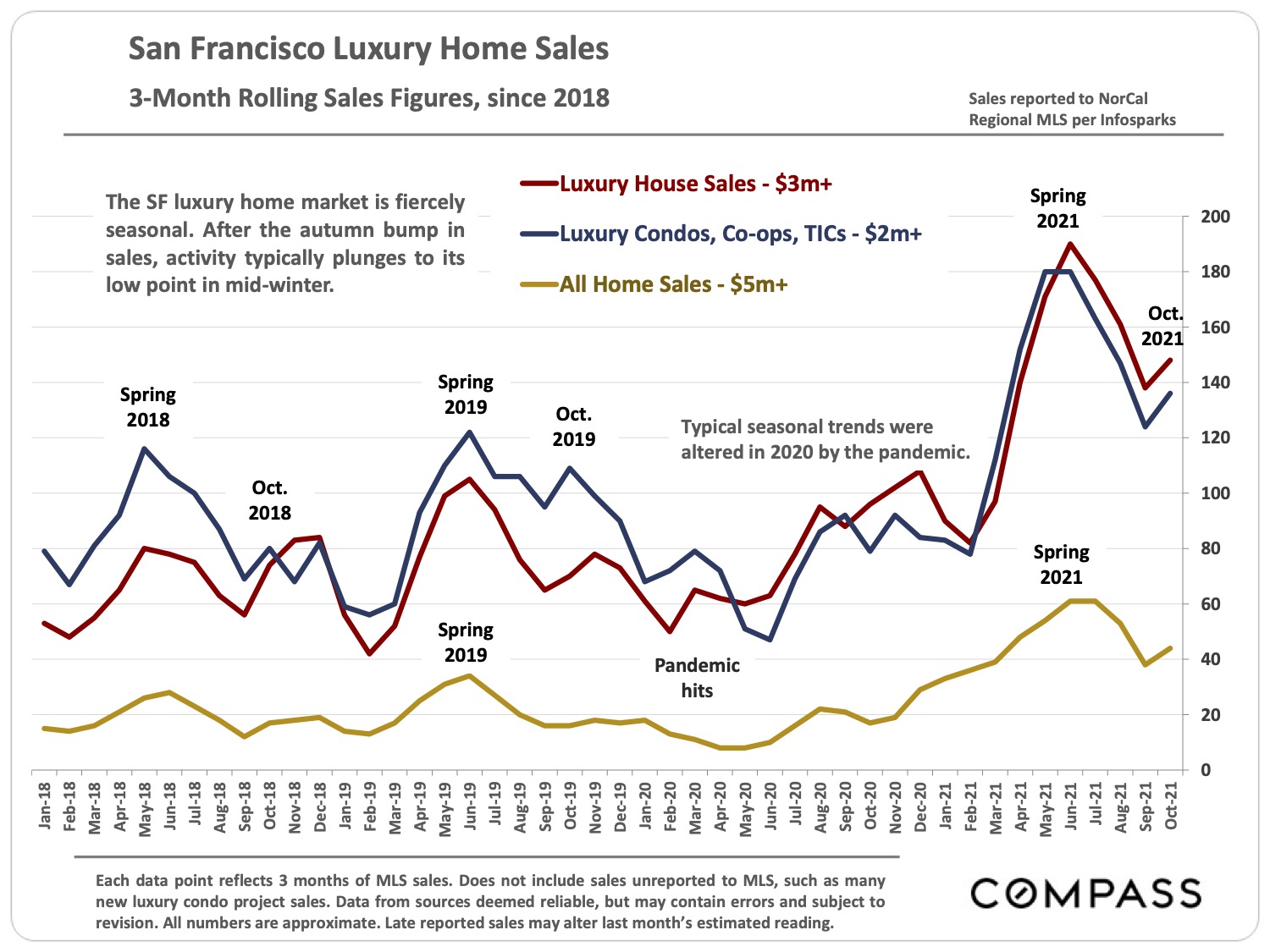
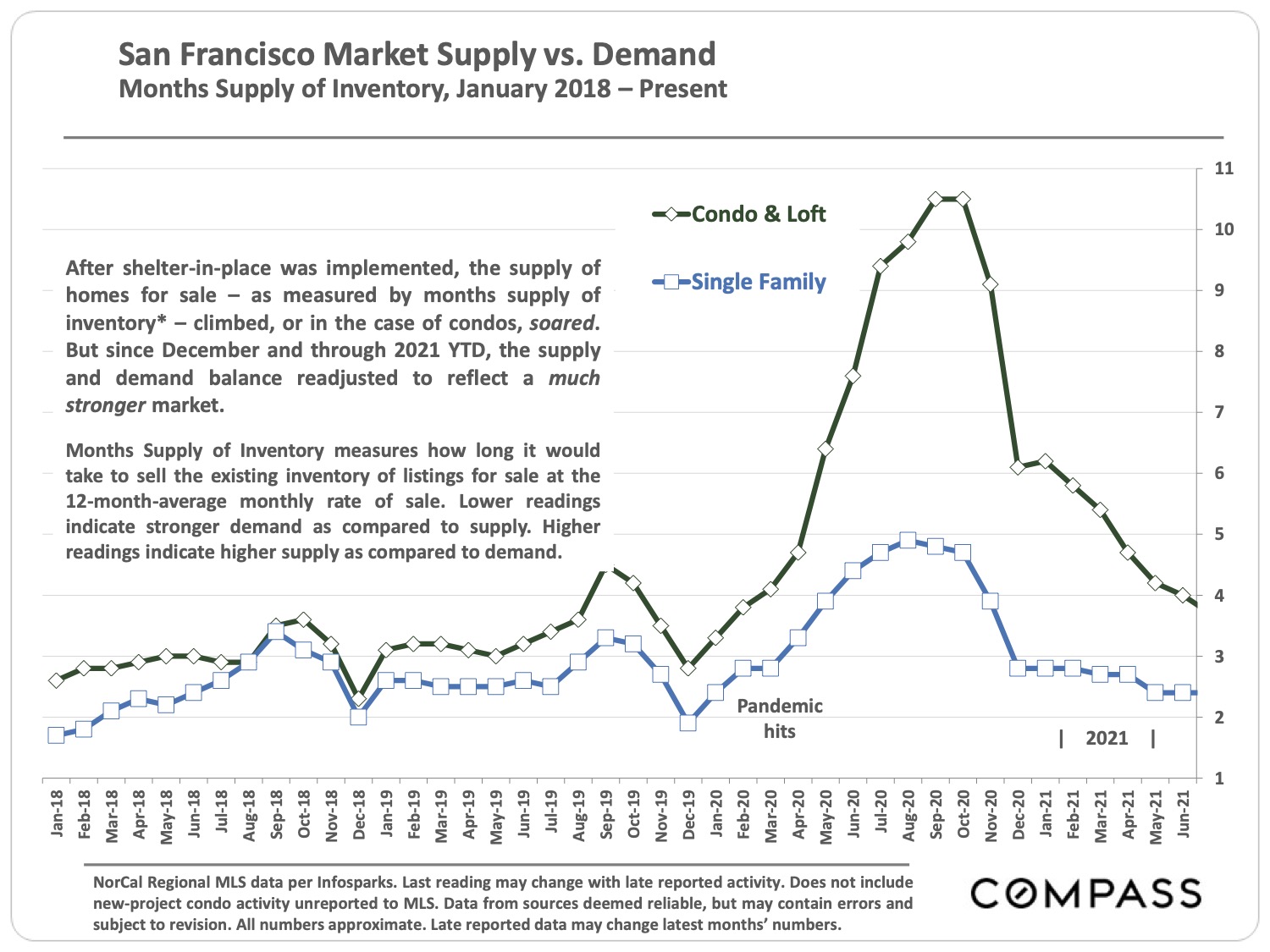
2021 SAN FRANCISCO MEDIAN HOME SALES PRICE MAP – COMPASS
This map reflects 2021 median home sales prices and average dollar per square foot values in San Francisco neighborhoods, for sales closing April 1 through mid-October 2021. Median sales prices are generalities that often fluctuate and can be affected by other factors besides changes in fair market value. They typically disguise a large range of prices in the underlying individual sales. It is impossible to know how median and average value statistics apply to any particular home without a specific comparative market analysis. All numbers to be considered approximate.
Check out the most up-to-date and comprehensive analysis of San Francisco home prices, values, conditions and trends of the San Francisco Bay Area residential real estate market here.

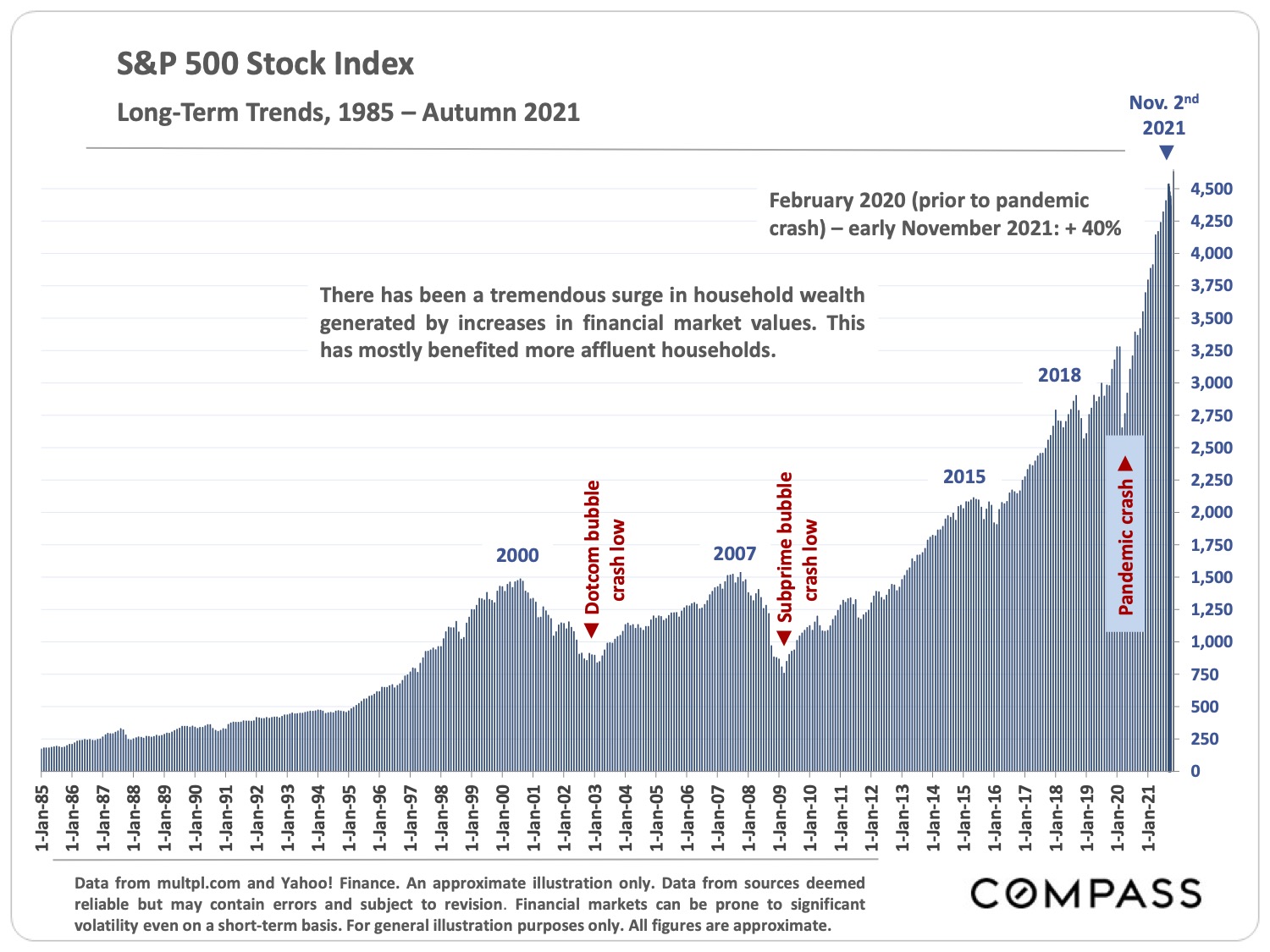
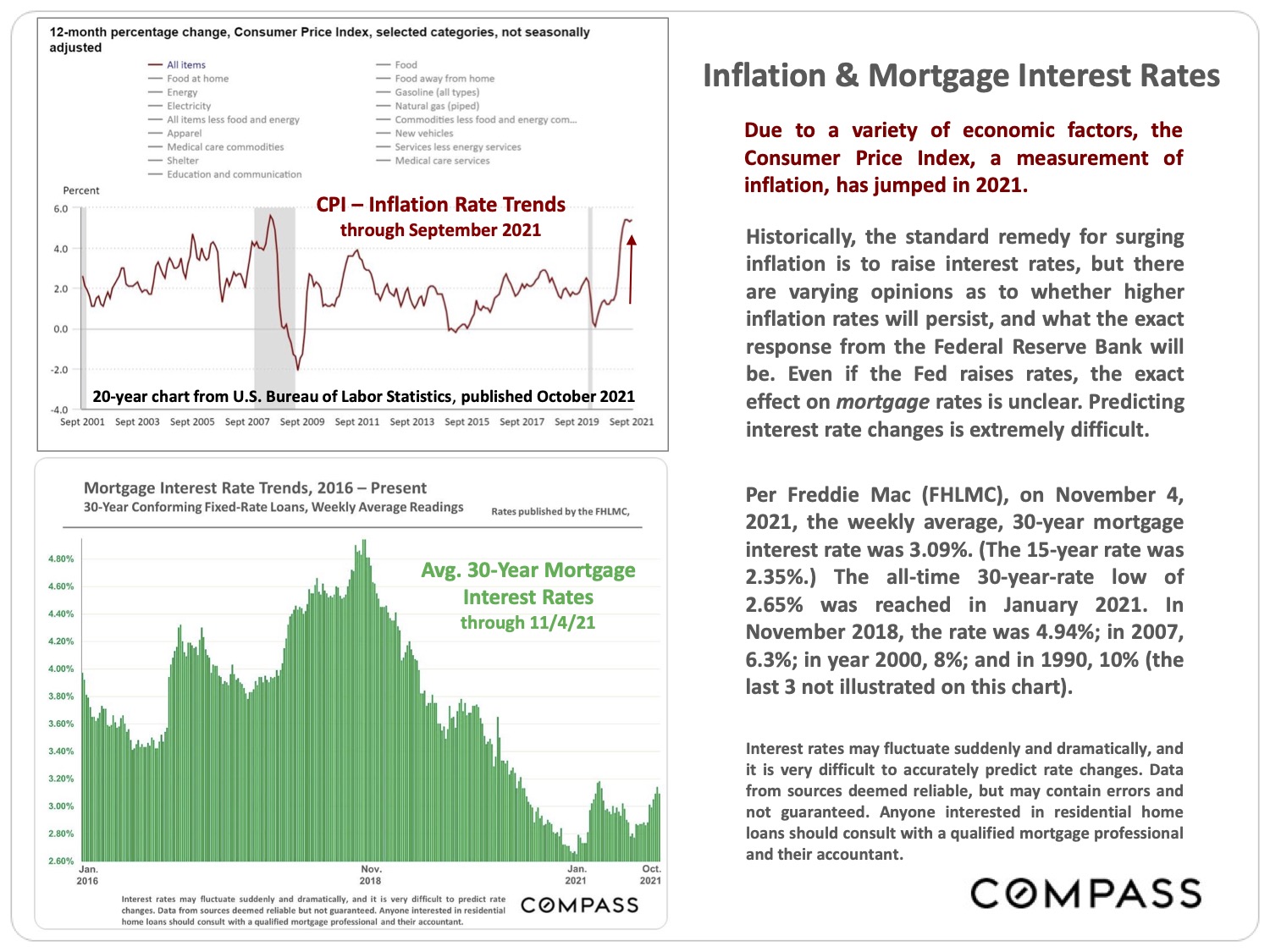
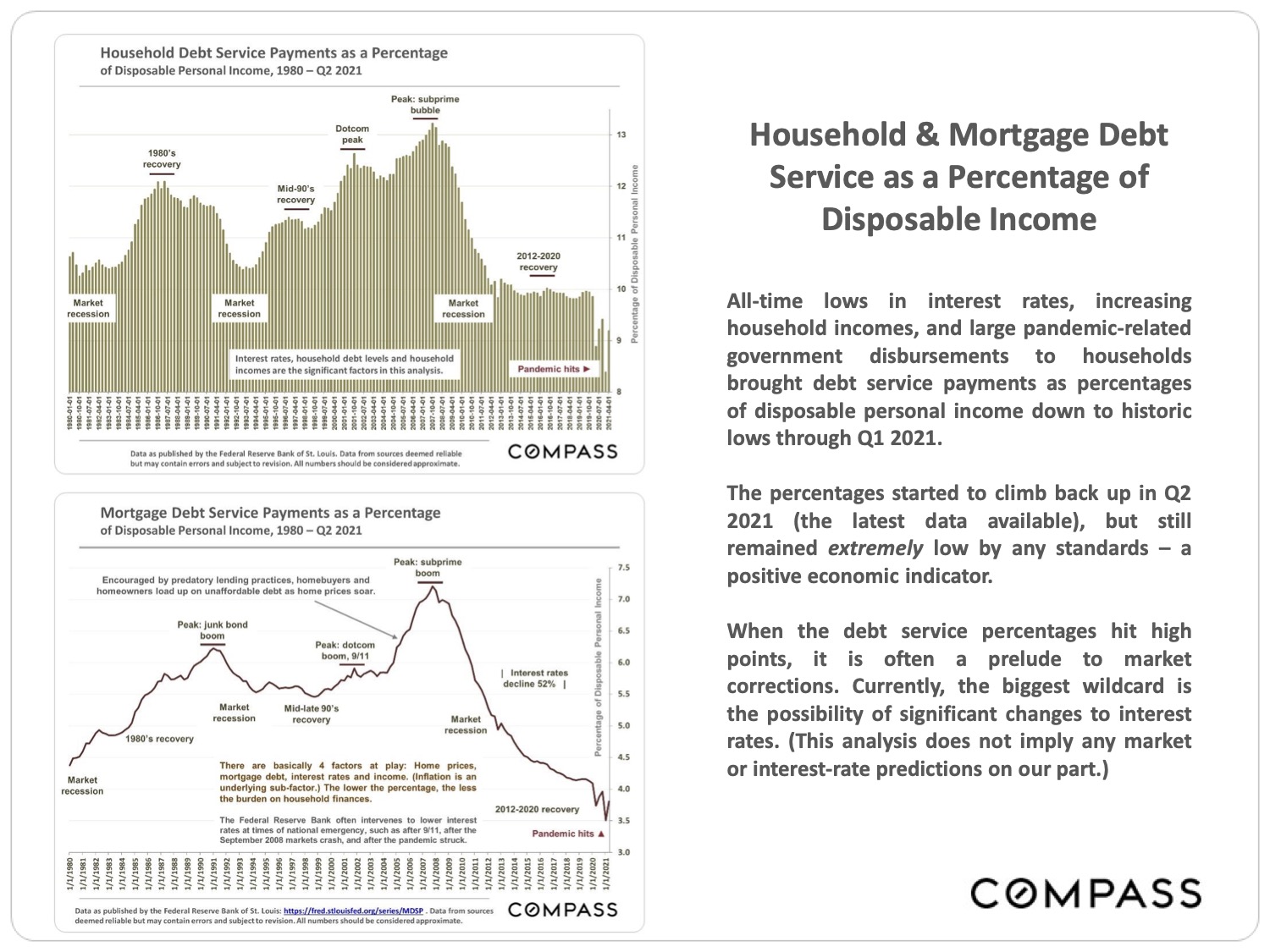
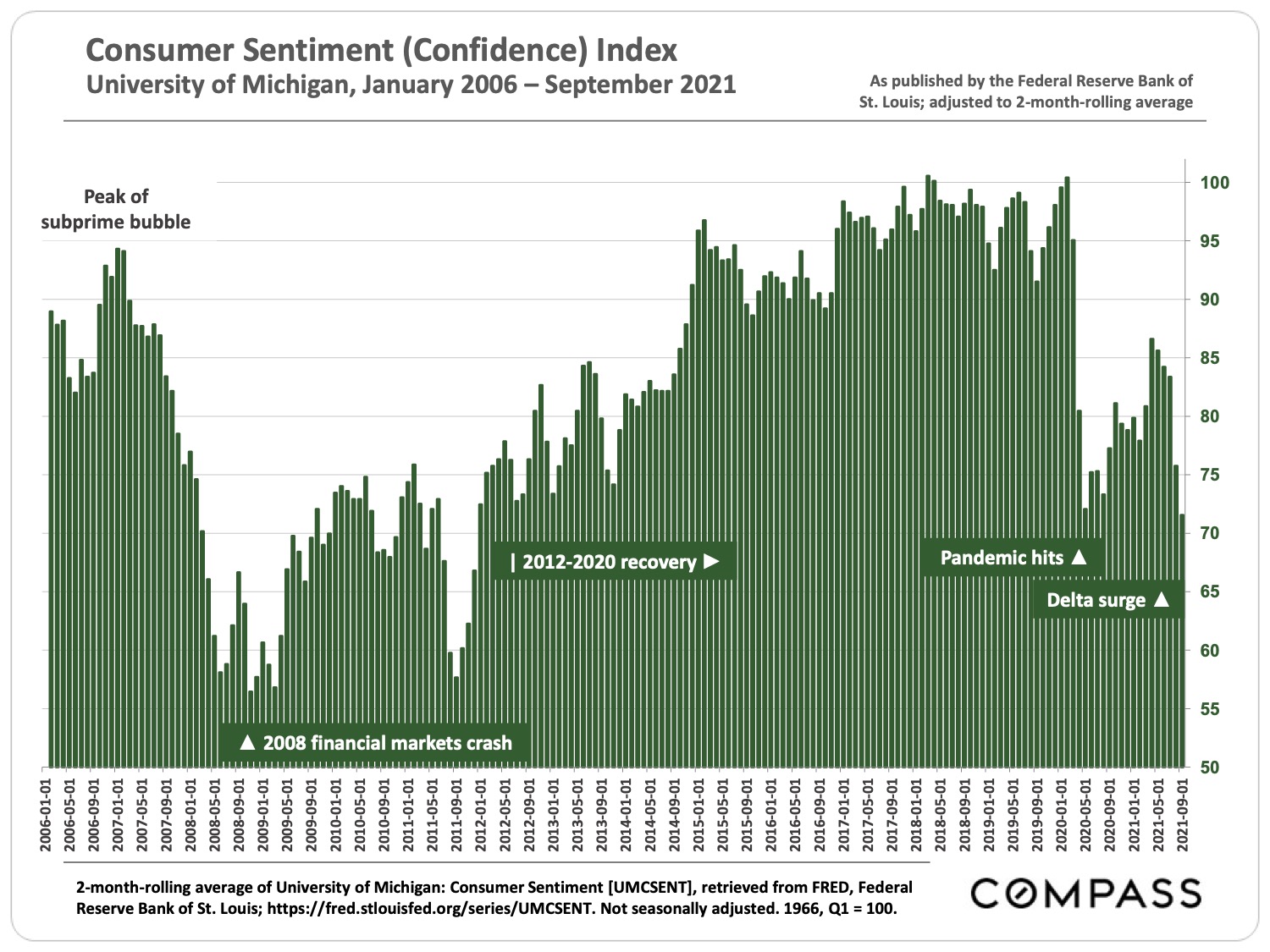
Statistics are generalities, essentially summaries of widely disparate data generated by dozens, hundreds or thousands of unique, individual sales occurring within different time periods. They are best seen not as precise measurements, but as broad, comparative indicators, with reasonable margins of error. Anomalous fluctuations in statistics are not uncommon, especially in smaller, expensive market segments. Last period data should be considered estimates that may change with late-reported data. Different analytics programs sometimes define statistics – such as “active listings,” “days on market,” and “months supply of inventory” – differently: what is most meaningful are not specific calculations but the trends they illustrate. Most listing and sales data derives from the local or regional multi-listing service (MLS) of the area specified in the analysis, but not all listings or sales are reported to MLS and these won’t be reflected in the data. “Homes” signifies real-property, single-household housing units: houses, condos, co-ops, townhouses, duets and TICs (but not mobile homes), as applicable to each market. City/town names refer specifically to the named cities and towns, unless otherwise delineated. Multi-county metro areas will be specified as such. Data from sources deemed reliable, but may contain errors and subject to revision. All numbers to be considered approximate.
Many aspects of value cannot be adequately reflected in median and average statistics: curb appeal, age, condition, amenities, views, lot size, quality of outdoor space, “bonus” rooms, additional parking, quality of location within the neighborhood, and so on. How any of these statistics apply to any particular home is unknown without a specific comparative market analysis.
Median Sales Price is that price at which half the properties sold for more and half for less. It may be affected by seasonality, “unusual” events, or changes in inventory and buying trends, as well as by changes in fair market value. The median sales price for an area will often conceal an enormous variety of sales prices in the underlying individual sales.
Dollar per Square Foot is based upon the home’s interior living space and does not include garages, unfinished attics and basements, rooms built without permit, patios, decks or yards (though all those can add value to a home). These figures are usually derived from appraisals or tax records, but are sometimes unreliable (especially for older homes) or unreported altogether. The calculation can only be made on those home sales that reported square footage.
Compass is a real estate broker licensed by the State of California, DRE 01527235. Equal Housing Opportunity. This report has been prepared solely for information purposes. The information herein is based on or derived from information generally available to the public and/or from sources believed to be reliable. No representation or warranty can be given with respect to the accuracy or completeness of the information. Compass disclaims any and all liability relating to this report, including without limitation any express or implied representations or warranties for statements contained in, and omissions from, the report. Nothing contained herein is intended to be or should be read as any regulatory, legal, tax, accounting or other advice and Compass does not provide such advice. All opinions are subject to change without notice. Compass makes no representation regarding the accuracy of any statements regarding any references to the laws, statutes or regulations of any state are those of the author(s). Past performance is no guarantee of future results.




